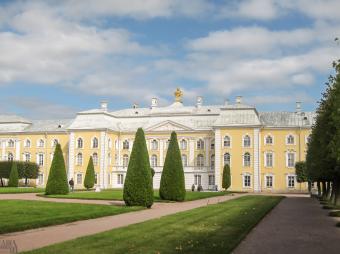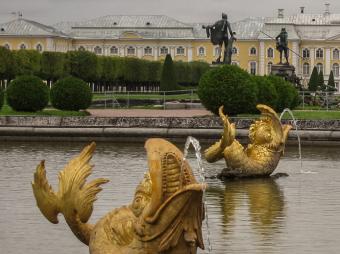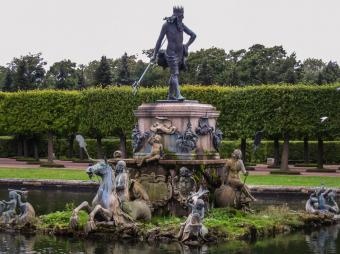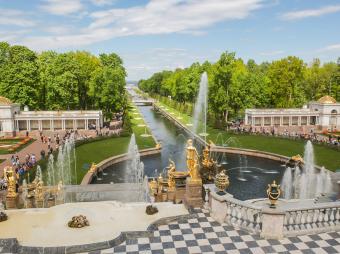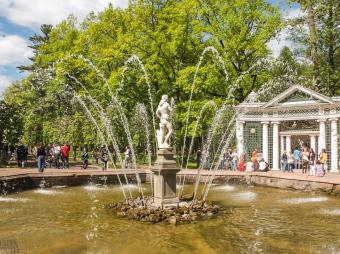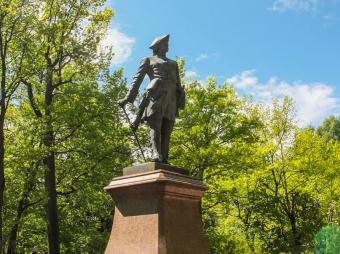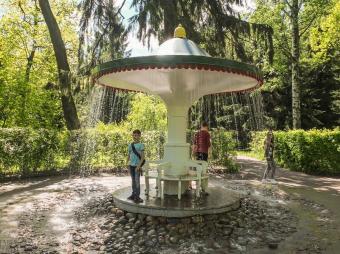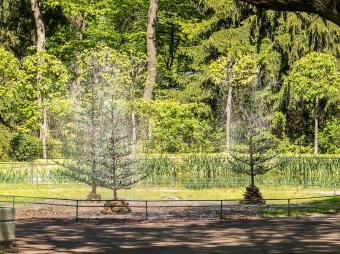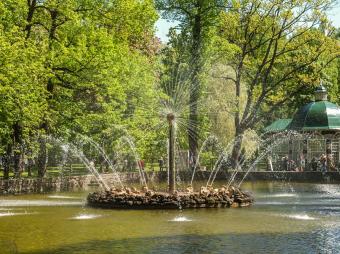Around Dvortsovaya Ploschad
Peterhof Estate

The main sight in Peterhof is of course the Peterhof Estate which was founded by Peter the Great as a summer residence on the coast of the Bay of Finland. The first palace was built here during the reign of Peter but this was considerably redeveloped during the reign of Peter’s daughter Empress Elizabeth. The resulting grand place is now often referred to as the Russian Versaille. The estate remained an imperial residence up until 1918 when it was turned into a museum.
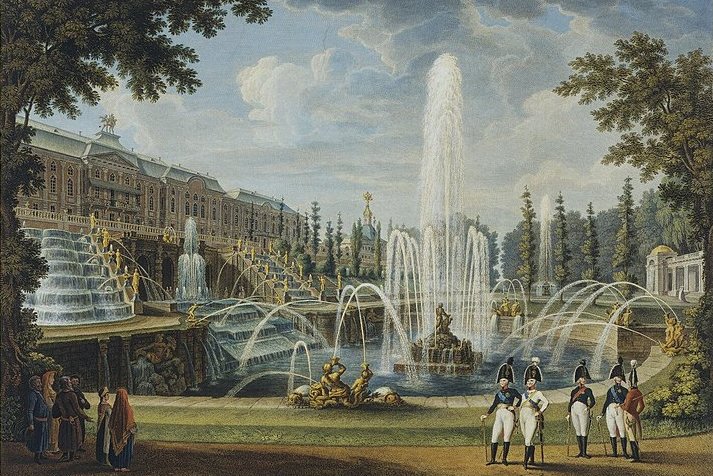
The estate suffered greatly at the hands of the Nazis during their occupation of the city from 1941 to 1944. Although over 8,000 items from the palace and around 50 statues were successfully evacuated before the Nazis reached the estate, much of what was left behind was almost completely destroyed. Restoration work was started almost immediately after the war and today the museum-reserve has been restored to how it looked before the destruction and has become one of the most popular tourist destinations in the country.
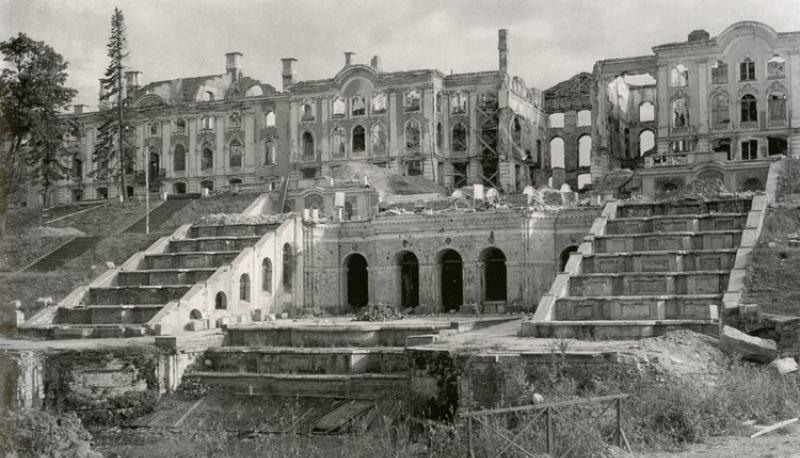
Most people who come to Peterhof only visit the estate and there is certainly enough to do here to take up one day. The estate consists of two parts: the Upper Park and the Lower Park. The Upper Park is free to visit but you need a ticket to visit the Lower Park where all the museums and the famous fountains are located. If you are coming to Peterhof by hydrofoil from St Petersburg you will need to buy a ticket to the Lower Park upon arrival and once you leave the estate you cannot return without buying a new ticket, therefore if you have a return ticket on the hydrofoil you should not leave the Lower Park. In addition to buying a ticket to access the Lower Park you will also need to buy separate tickets to each individual museum in the Lower Park you wish to visit.
Upper Park
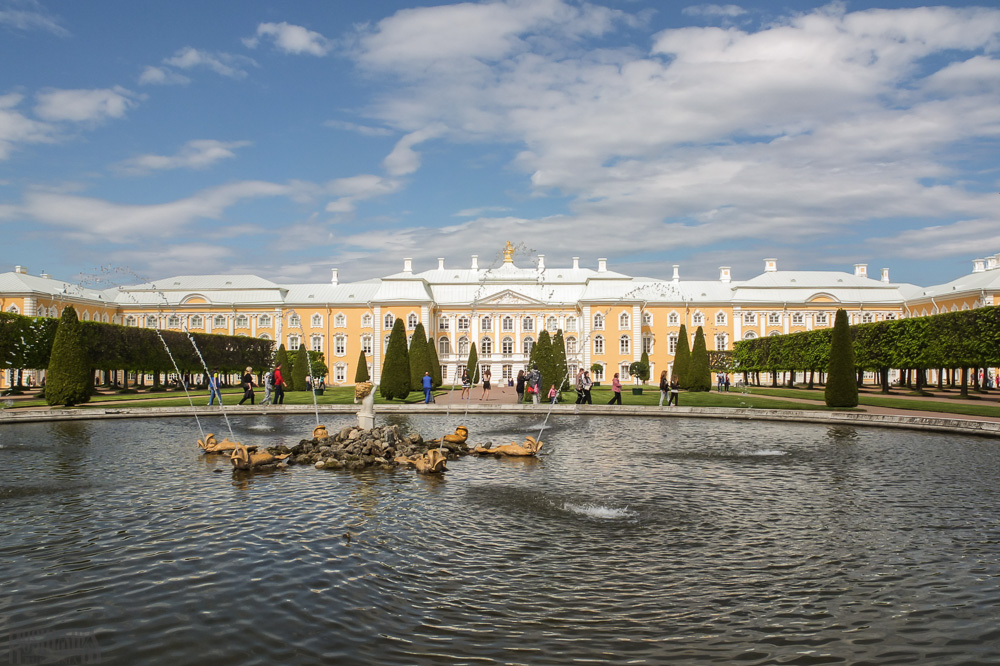
The park to the south of the Grand Peterhof Palace is known as the Upper Park and this part of the estate is always free to visit and walk around. The park was first established during the reign of Peter the Great but it only obtained its current formal appearance in the first half of the 18th century. At the same time fountains were installed in the grounds including the Oak Fountain, the Neptune Fountain, the Mezheumny Fountain which depicts a dragon surrounded by fish and the Square Pond Fountains which feature statues of personifications of spring and summer. Many statues are also dotted around the park. As with the rest of the estate the upper park was heavily damaged in the Second World War and subsequently restored.
Grand Peterhof Palace
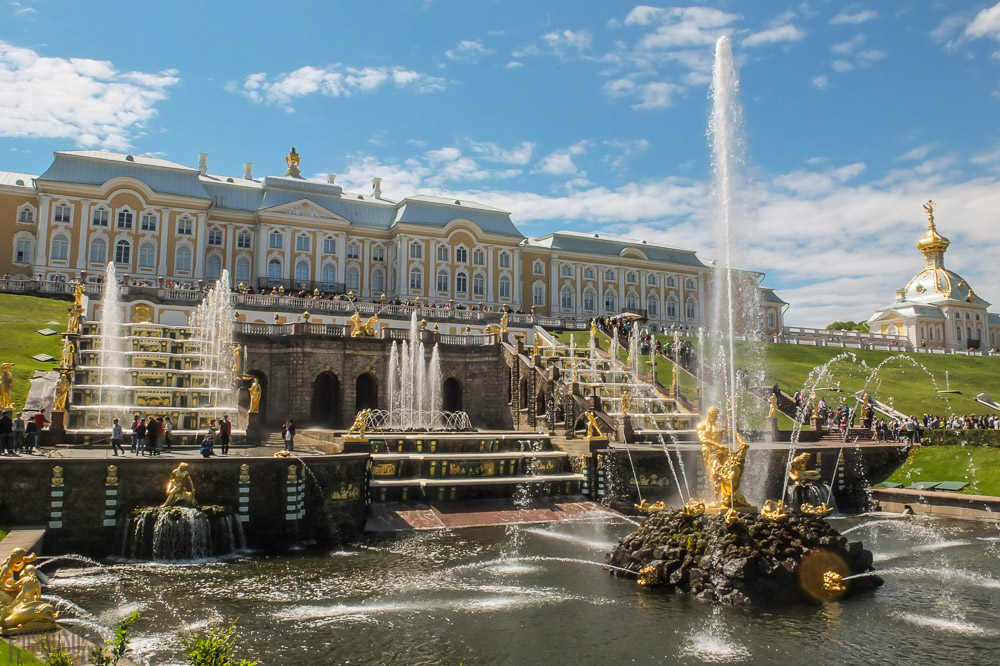
The centrepiece of the imperial estate at Peterhof is the Grand Peterhof Palace which is often referred to as the Russian Versailles. Construction of the palace began during the reign of Peter the Great in 1714 and was completed in 1725. However between 1745 and 1755 the palace was considerably remodelled on the instruction of Peter's daughter Empress Elizabeth who hired architect Francesco Bartolomeo Rastrelli to oversee the work.
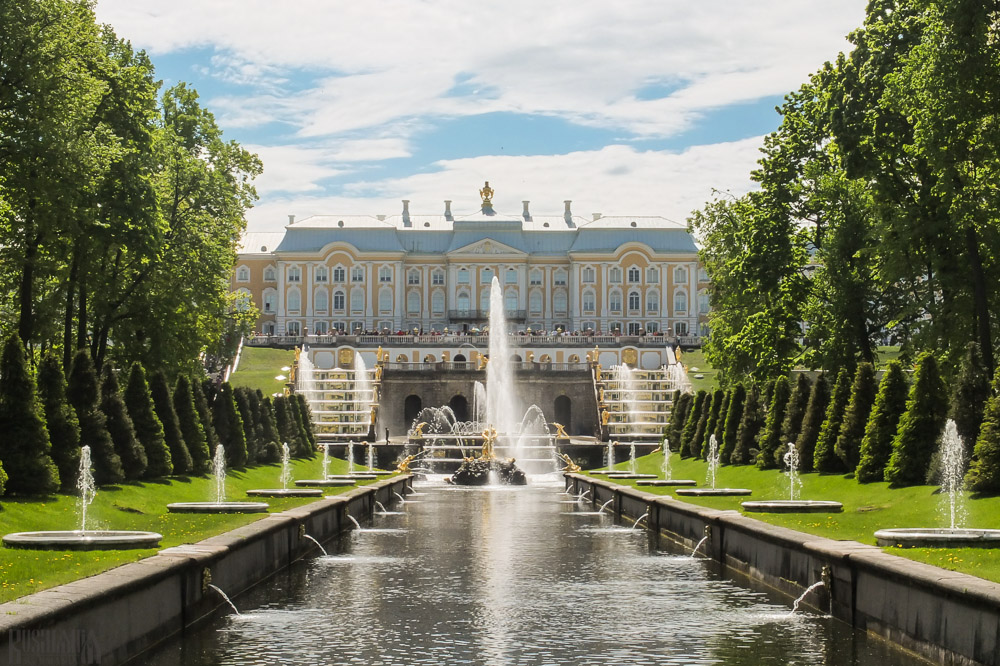
In 1918 the palace was nationalised and turned into a museum and then virtually destroyed during the Second World War. However immediately after the war reconstruction work began and many famous architectures were engaged in the project to restore the palace to its former glory. By 1952 the exterior of the palace had been reconstructed and by 1964 the first halls were restored and reopened to visitors. Today the palace has been completely restored and is open to the public as a museum of the Peterhof State Museum-Reserve. A visit inside the palace allows you to see the immaculately restored halls which include the Parade Staircase, the Dance Hall, the Blue Reception, the Chesma Hall, the Chinese Cabinets, the Audience Hall and the Throne Hall.
10:30 - 18:00 (Saturdays: 10:30 - 21:00). Closed on Mondays and the last Tuesday of the month
Ss Peter and Paul's Church Museum
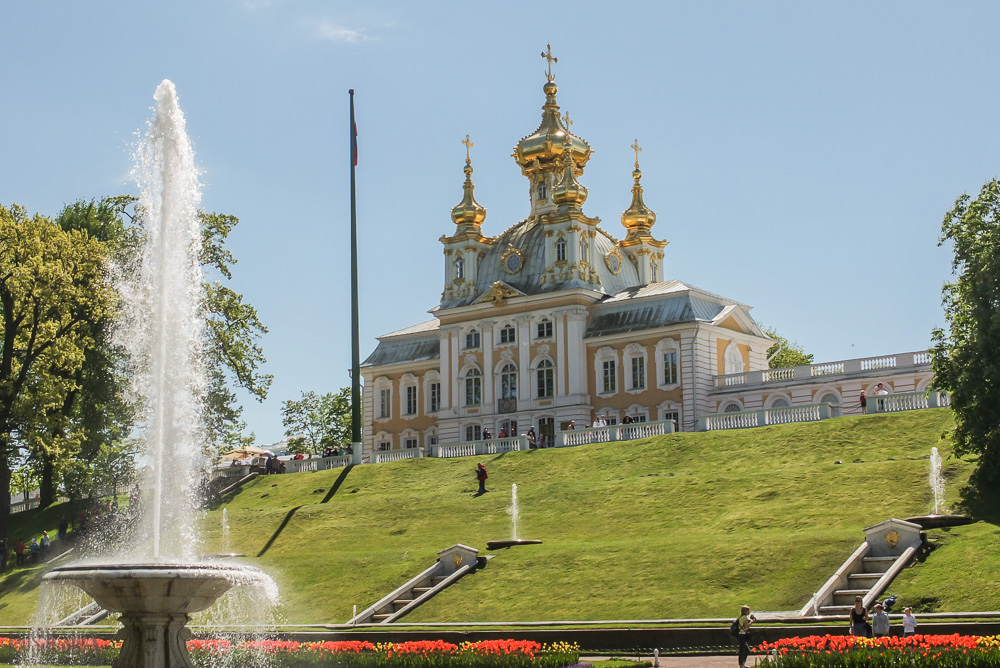
The eastern wing of the Grand Palace consists of the Ss Peter and Paul's Church which was consecrated in 1751 to serve as the main place of worship for the imperial family when residing at the palace. Like the palace itself, it is the work of Francesco Bartolomeo Rastrelli and features five baroque style domes. The church was destroyed during the Second World War and unlike the rest of the palace was only fully restored in 2011. Today it is open to the public as a museum and displays many old icons, vestments and items used in religious services.
Special Treasury Museum

Located in the western wing of the Grand Palace is the Special Treasury Museum, which, as its name suggests, stores various collections of jewels and treasures of the former imperial family. In total there are over 800 items on display including gifts, furniture, jewellery and Faberge eggs.
Grand Cascade

The most famous feature of Peterhof is perhaps the Grand Cascade in front of the Grand Palace. Peter the Great originally thought of the idea to include a cascade of fountains as the centre piece of his residence and the first version was put into operation in 1723.

However the Grand Cascade only acquired its present appearance in 1736 when the famous Samson Fountain was added during the reign of Empress Anna. Samson is depicted wrestling open the mouth of a lion from which a stream of water shoots 25 metres up into the air. The original statue was lost during the war and a recreation was installed in 1947 along with the reconstruction of the cascade itself.
Grottoes Museum
The upper and lower grottoes behind the Gran Cascade were originally built between 1716 and 1720 according to an idea of Peter the Great. The grottos also feature fountains of their own and are decorated with various statues. Today you can visit them as a museum, which includes seeing the inner workings of the cascade and an exhibition on its creation. From the cascade the canal known as the Fountain Alley runs down to the Gulf of Finland.
Lower Park and Fountains
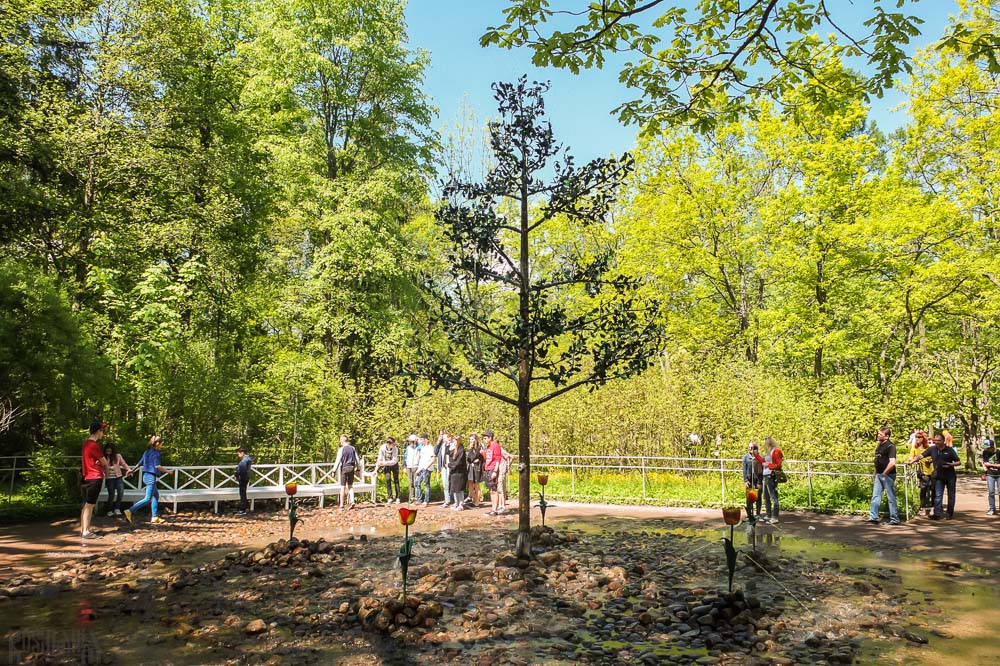
Peterhof's Lower Park is home to the many various fountains for which the estate is especially famous. The idea for the park with fountains was thought up by Peter the Great himself. The centrepiece is of course the Grand Cascade but there are many other interesting fountains here, including several quirky and playful ones which are disguised so that people get sprayed when the fountain is switched on.
Marly Palace
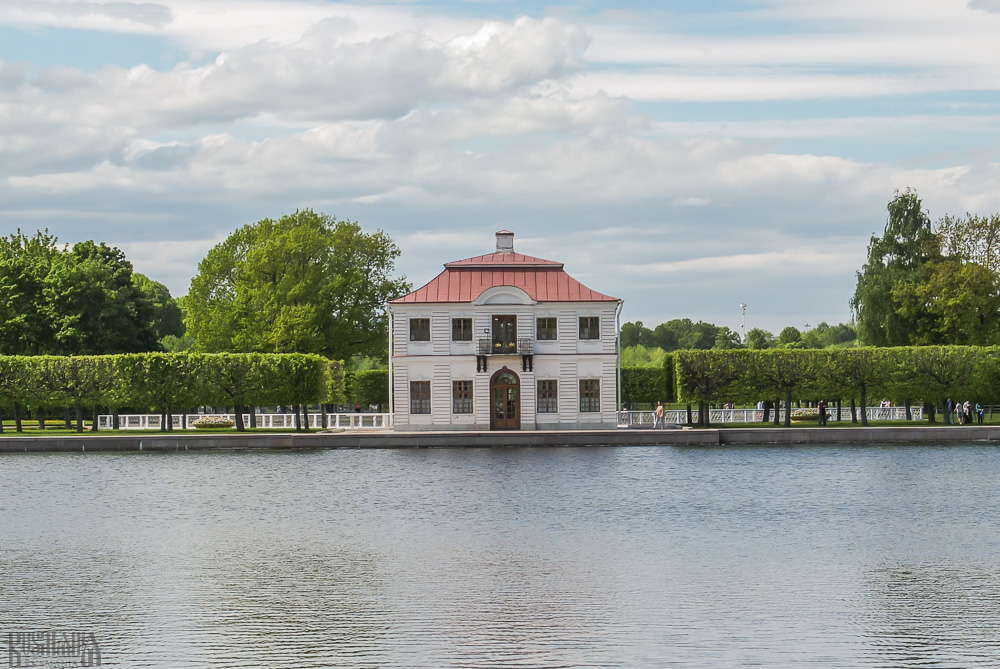
In the far west of the Lower Park is the simple Marly Palace which was originally built between 1720 and 1723 and recreated after the Second World War. It is situated between the Marly Pond and several small fish ponds. Today it is run as a museum and its interiors have been recreated to how they would have looked during the time of Peter the Great, including the Plane and Oak Cabinets.
Hermitage Pavilion
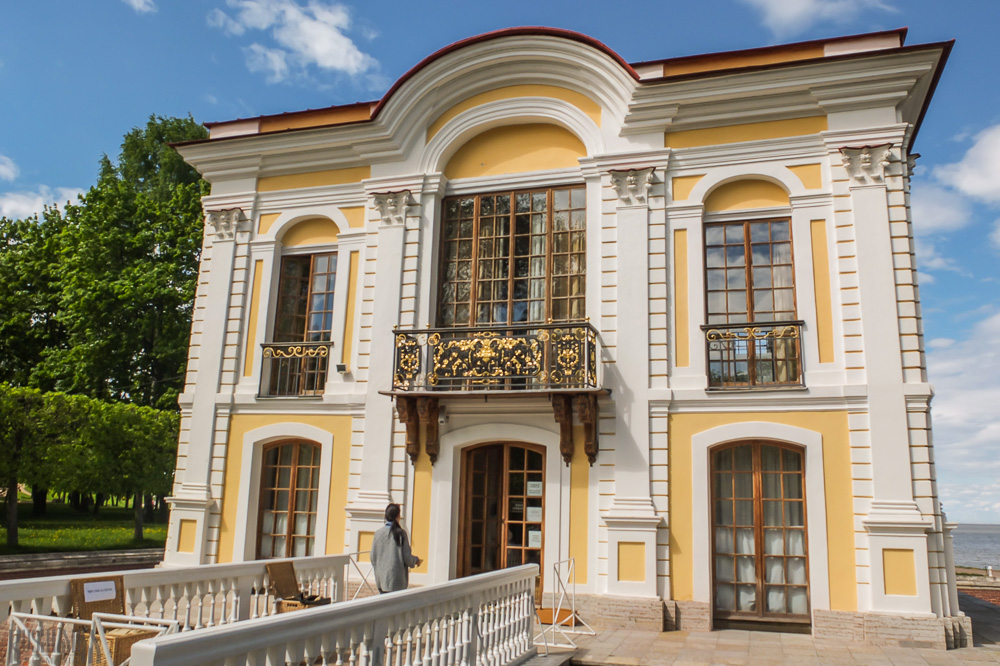
The Hermitage Pavilion was built on the shore of the Gulf of Finland between 1721 and 1725 to host gatherings of small groups. The pavilion consists of two stories the ground floor was used by staff to prepare food while the second floor was where guests were entertained. Originally a chairlift was used to go up to the second floor and the dining table could be lowered down to the ground floor so that the staff had no chance to overhear the private conversations. Today the pavilion can be visited as a museum.
Imperial Yacht Museum
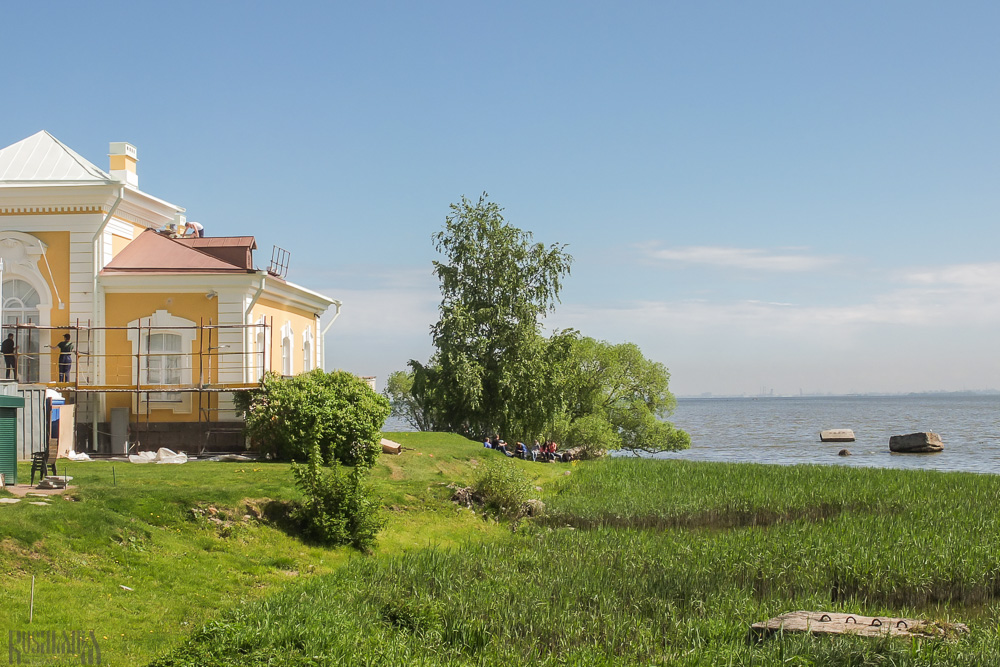
The Imperial Yacht Museum is located close to the wharf from where ferries to St Petersburg arrive and depart. The museum details the history of the estate as the naval residence of Russian emperors and the yachts which were docked here, including some models.
Catherine Block
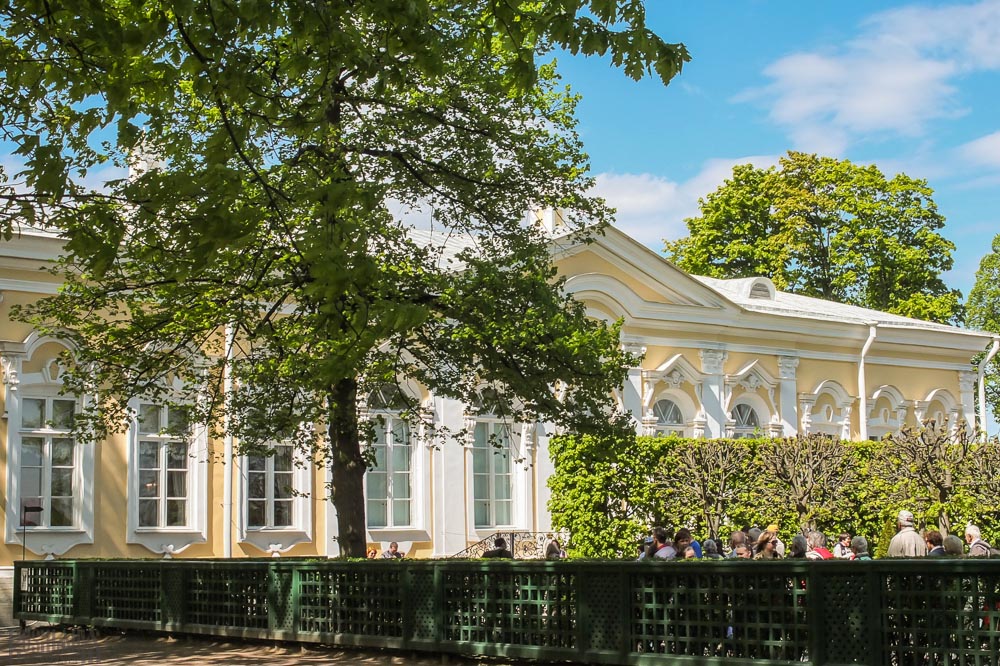
The Catherine Block is a separate building named in honour of Empress Catherine the Great used to hold banquets and balls. It was built between 1747 and 1759 according to a design by Francesco Bartolomeo Rastrelli. The building is now a museum and by visiting you can see the beautiful interiors and the famous Gurieve dining service which consists of over 4,500 items.
Monplaisir Palace

The Monplaisir Palace was built at the same time as the Grand Palace and became a favourite residence of Peter the Great who came up with its name meaning 'my pleasure'. The palace is now open to the public as a museum and, in addition to its wonderful interiors, on display are various works of art, Chinese porcelain, Dutch faience and Russian glassware.
Bath Block

The Bath Bock consists of several small buildings which are now run as a museum. The centrepiece is the Bath Block which was constructed in 1866 for Empress Maria Aleksandrovna (wife of Emperor Alexander II). Other buildings were used to hold and prepare for banquets.
Aviaries
In the east of the Lower Park are two wooden aviaries which were originally built in 1722. The aviaries hold various birds including songbirds, macaws, parrots and cockatoos while the pond outside has swans, geese and ducks.
| Location | 2 Ulitsa Razvodnaya |
|---|---|
| Website | http://www.peterhofmuseum.ru/ |
